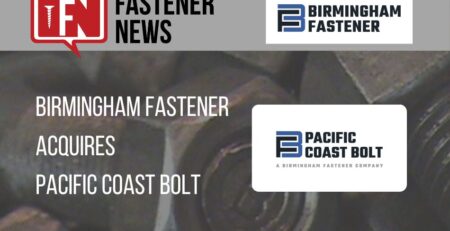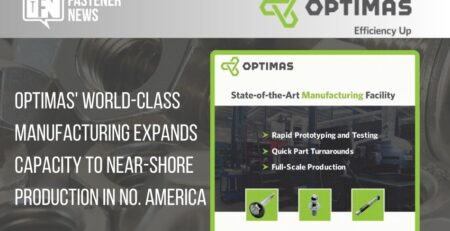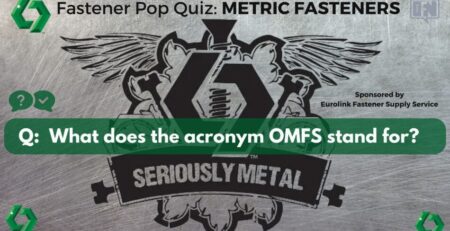What Does Open AI ChatGPT Know About Fasteners?
Fastener News Desk is always interested in new technologies and how they might affect our lives and businesses in the near future. We decided to take a closer look at the technology and see how fastener distributors and manufacturers might employ these new technologies. While this may be a tool to use it can not provide all the answers or even the correct ones all the time. More time data and research is needed in order to apply this new technology to the fastener industry.
As a precursor to this article, we would like to disclose that the answers to questions in this article has been written by several prompts to the Chat GPT search. We started by asking What is ChatGPT and why it was founded. We’ll let the technology tell the rest of the story!
What is Chat GPT?
“Chat GPT” likely refers to a chatbot or virtual assistant built using the GPT (Generative Pre-trained Transformer) language model, which is a type of deep learning model developed by OpenAI. GPT models are capable of generating human-like responses to natural language queries, and have been used in a variety of natural language processing applications, including chatbots and virtual assistants. By training a GPT model on a large corpus of text data, it can learn to generate text that is similar to the patterns and structure of human language, making it a powerful tool for generating natural language responses in conversational interfaces.
Why was OpenAI founded?
OpenAI was founded in 2015 with the goal of advancing artificial intelligence in a safe and beneficial manner for all of humanity. The organization was founded by a group of leading technologists, including Elon Musk, Sam Altman, Greg Brockman, Ilya Sutskever, John Schulman, and Wojciech Zaremba, among others. The founders recognized that artificial intelligence has the potential to transform society in profound ways, but also recognized the risks and challenges associated with developing such powerful technologies. OpenAI’s mission is to conduct research in artificial intelligence and develop cutting-edge AI technologies, while also ensuring that these technologies are safe and beneficial for society as a whole. The organization is committed to advancing the field of AI through open collaboration and transparency, and to promoting responsible practices in the development and deployment of AI technologies.
What is fastener distribution?
Fastener distribution is the process of supplying fasteners to end users, typically manufacturers and construction professionals, through a network of distributors. Fastener distributors typically maintain large inventories of fasteners, including bolts, screws, nuts, washers, and other components, in a variety of sizes, materials, and finishes. These fasteners are then sold to end users, who rely on the distributors to provide the necessary components in a timely and cost-effective manner. Fastener distribution companies may also provide additional services, such as custom packaging, kitting, and value-added services like assembly, quality inspection, and engineering support. The fastener distribution industry plays a critical role in the supply chain for a wide range of industries, including construction, automotive, aerospace, and manufacturing.
Which fastener manufacturers are most well-known?
There are many prominent fastener manufacturers worldwide, and some of the largest and most well-known companies include:
- Illinois Tool Works
- Precision Castparts Corp.
- LISI Group
- Arconic Inc.
- Stanley Black & Decker
- Acument Global Technologies
- Nucor Fastener
- Penn Engineering & Manufacturing Corp.
- Sundram Fasteners Ltd.
- Bulten AB
These companies have established themselves as leaders in the fastener industry, and they are known for their high-quality products, innovation, and global reach. However, there are many other reputable fastener manufacturers as well, including smaller and specialized companies.
What are fasteners used for?
Fasteners are used to mechanically join two or more objects together, typically in a temporary or permanent fashion. They are essential components in a wide range of applications, including construction, manufacturing, automotive, aerospace, electronics, and many others. Examples of fasteners include screws, bolts, nuts, washers, pins, and rivets. These components come in a variety of materials, sizes, and shapes, and can be used to join different types of materials, such as metal, plastic, wood, and composite materials. The choice of fastener depends on factors such as the application, load capacity, environmental conditions, and the desired level of strength and durability.
What are some of the most commonly used fasteners?
-
Screws: Screws are threaded fasteners that are used to join two or more objects by applying force to the joint through the screw’s threads. They come in many different shapes, sizes, and materials, and are used in a wide range of applications.
-
Bolts: Bolts are similar to screws, but they are typically larger and are used to join two or more objects through a hole. They are often used in structural applications and can be made of a variety of materials, including steel, stainless steel, and titanium.
-
Nuts: Nuts are threaded fasteners that are used in combination with bolts or screws to create a secure joint. They are available in many different shapes and sizes and can be made of a variety of materials.
-
Washers: Washers are used in conjunction with nuts and bolts to distribute the load and prevent damage to the object being fastened. They come in many different sizes and materials and can be flat, spring, or lock washers.
-
Rivets: Rivets are used to join two or more objects by deforming a cylindrical shaft that is inserted through a hole in the objects being joined. They are commonly used in aerospace and automotive applications.
-
Pins: Pins are cylindrical fasteners that are used to secure two or more objects together, typically by passing through a hole in the objects being joined.
These are just a few examples of the many different types of fasteners available. The choice of fastener depends on the specific application and the desired strength, durability, and corrosion resistance of the joint.
Why is it important to choose the correct fasteners when manufacturing a new product?
Choosing the correct fasteners is important when manufacturing a new product for several reasons:
-
Safety: Choosing the right fasteners ensures that the product will be safe to use. Using the wrong fasteners can result in structural failures, which can cause serious injury or property damage.
-
Functionality: The fasteners used in a product must be designed to withstand the intended load and operating conditions. Choosing the right fasteners ensures that the product will function as intended and last for its intended lifespan.
-
Cost: Selecting the right fasteners can help minimize costs by preventing the need for repair or replacement. Using the wrong fasteners can lead to costly repairs, replacements, and downtime.
-
Aesthetics: The fasteners used in a product can impact its appearance. Selecting fasteners that match the product’s design and finish can improve the overall look and appeal of the product.
In summary, choosing the correct fasteners is essential to ensuring that the final product meets its design requirements, operates safely and effectively, and is cost-effective to manufacture and maintain.
Why choose metric over inch fasteners?
The choice between metric and inch fasteners often depends on a variety of factors, including the type of application, the country in which the product is being manufactured or used, and the standards and regulations that apply to the product. However, here are a few reasons why someone might choose metric over inch fasteners:
-
Global Standards: The metric system is the global standard for measuring length, mass, and volume. For this reason, metric fasteners are more commonly used in applications that require global standardization.
-
Availability: In many parts of the world, metric fasteners are more widely available than inch fasteners. If you are working on a project in a region where metric fasteners are the norm, it may be easier to find the fasteners you need in metric sizes.
-
Precision: The metric system is based on units of 10, which makes it easier to calculate and measure precise dimensions. This can be especially important in applications where tight tolerances are required.
-
Compatibility: In some cases, metric fasteners may be more compatible with metric components, such as bearings, gears, and other mechanical parts. This can make it easier to find compatible parts and assemble a product.
-
Cost: In some cases, metric fasteners may be less expensive than inch fasteners. This can be due to a variety of factors, such as the availability of raw materials or the cost of manufacturing and distribution.
In summary, the choice between metric and inch fasteners depends on a variety of factors, and there is no one-size-fits-all answer. However, for some applications, metric fasteners may be a better choice due to global standards, availability, precision, compatibility, or cost.
What are the different types of rivets and their uses?
Rivets are a type of fastener that are used to permanently join two or more pieces of material together. The following are some of the most common types of rivets and their uses:
-
Solid Rivets: These are the most basic type of rivets, and are made of a single piece of metal that is hammered into place. They are commonly used in construction, shipbuilding, and aerospace applications.
-
Blind Rivets: These are also known as “pop” rivets, and are used when only one side of the material is accessible. Blind rivets have a hollow shaft that collapses when the mandrel is pulled, creating a permanent connection. They are commonly used in the construction of vehicles and machinery.
-
Tubular Rivets: These are similar to solid rivets, but have a hollow center. They are commonly used in leather goods, such as handbags and belts.
-
Drive Rivets: These are a type of rivet that are driven into place using a hammer or drill. They are commonly used in sheet metal and automotive applications.
-
Split Rivets: These are made of two pieces, and are joined by bending the split ends into place. They are commonly used in the manufacturing of leather goods and paper products.
-
Semi-Tubular Rivets: These are similar to tubular rivets, but have a shallow hole on one end. They are commonly used in the manufacturing of electronics and electrical appliances.
- Tinner Rivets: Tinner’s rivets are small, thin rivets that are typically used to join sheet metal or other thin materials together. They are also sometimes called “sheet metal rivets” or “craftsman rivets”. Tinner’s rivets are typically made of brass, copper, or steel, and they come in a variety of sizes and styles to accommodate different thicknesses and types of materials. They are often used in applications such as roofing, gutters, HVAC ductwork, and other sheet metal products. The name “tinner’s rivets” comes from the fact that they were originally used by tinsmiths and other craftspeople who worked with thin metals.
In summary, there are many types of rivets, each with their own unique uses and applications. The choice of which type of rivet to use depends on the specific application and materials being joined.
Why would you choose hot dip galvanized over zinc plated bolts?
Hot-dip galvanizing and zinc plating are both processes used to protect steel from corrosion, but there are some key differences between the two that can influence the choice of which one to use.
Advantages of hot-dip galvanizing:
• Durability: Hot-dip galvanizing provides a thicker layer of zinc that is much more resistant to wear and tear than zinc plating. This makes it a better option for outdoor or high-wear applications.
• Better protection: The hot-dip galvanizing process provides a more complete and uniform coverage of the steel surface, which provides better protection against corrosion.
• Long-term performance: Hot-dip galvanizing provides a longer-lasting protective barrier than zinc plating, which can help reduce maintenance costs and extend the life of the fastener.
Advantages of zinc plating:
• Cost: Zinc plating is typically less expensive than hot-dip galvanizing, which can be an important consideration for cost-sensitive applications.
• Aesthetics: Zinc plating provides a smoother and shinier finish than hot-dip galvanizing, which can be important in some applications where appearance is a factor.
In conclusion, hot-dip galvanizing is typically the better choice for applications that require long-term protection from corrosion and high levels of durability, such as outdoor or high-wear applications. Zinc plating is typically a more cost-effective option for indoor applications or where appearance is a factor, but may not provide the same level of protection or durability as hot-dip galvanizing.













Leave a Reply